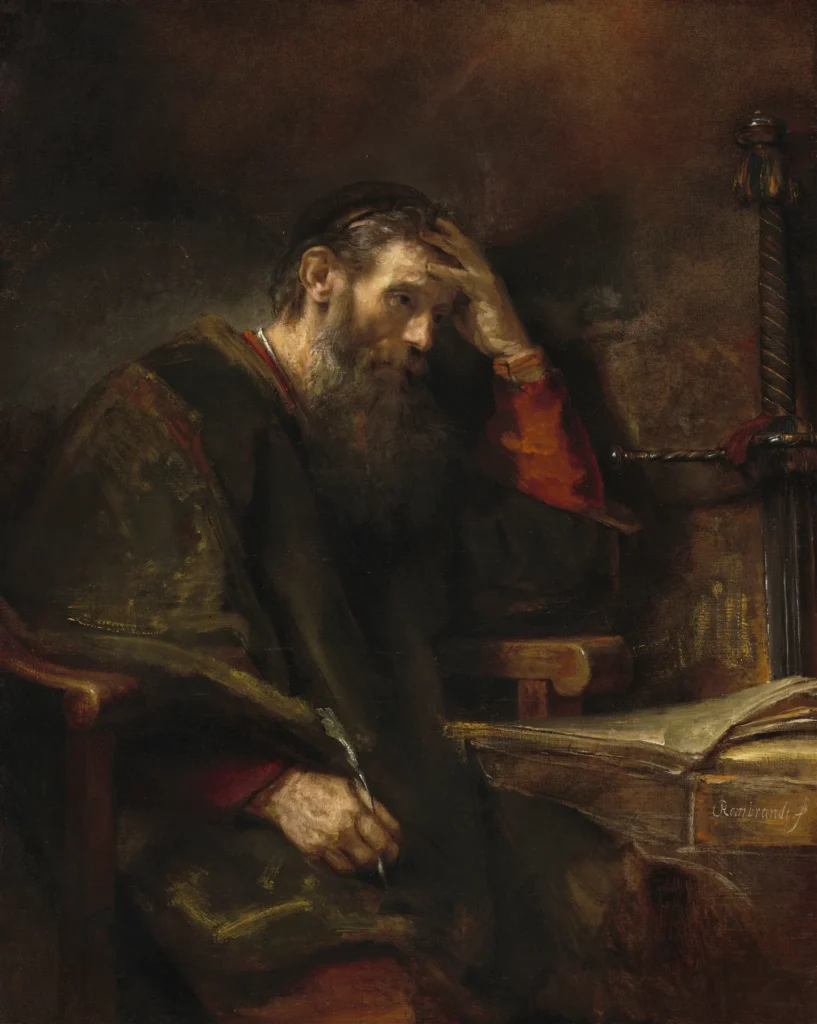The Apostle Paul
Rembrandt van Rijn’s works featuring the Apostle Paul, created between 1627 and 1661, demonstrate his profound engagement with biblical themes and the complexities of human emotion. Each painting captures different phases of Paul's life, marked by muted colors, emotional depth, and unique symbolic elements. From the solitary figure of Paul in prison to the introspective self-portrait, these works convey themes of faith, sacrifice, and personal introspection.
1627-1661
About the Artwork
Did You Know
Liked what you see? Add it to your collection.
Enjoyed reading? Share it.
... continued
The Apostle Paul in Prison (1627)
This early work by Rembrandt, painted in 1627, is housed at the Staatsgalerie in Stuttgart, Germany. The painting depicts Paul in a prison cell, characterized by muted grays and deep brown tones. Paul is shown with an open book, likely his letters, and a sword beside him, symbolizing his impending martyrdom. The scene is marked by solitude and quiet dignity, with detailed textures of the stone walls, wooden bench, and Paul's cloak. The composition emphasizes Paul's introspective gaze and the weight of his spiritual journey.
An Elderly Man as Saint Paul (1659)
This painting, probably from 1659, is part of the National Gallery's collection in London. It shows an elderly Saint Paul in a half-length portrait, with traditional attributes such as an open book on the table and a sword leaning against the wall. The painting includes a roundel depicting Abraham about to sacrifice Isaac, an Old Testament episode that Rembrandt often referenced to illustrate faith in God. The dark tones and minimal details create a pensive and intimate atmosphere, highlighting Paul's role as a significant interpreter of the Gospel in Protestant theology.
Self-Portrait as the Apostle Paul (1661)
In this self-portrait, painted in 1661, Rembrandt depicts himself as the Apostle Paul. The work is housed at the Rijksmuseum in Amsterdam. Here, Rembrandt is 55 years old and portrays himself candidly, using his own face to encourage a personal engagement with the saint. The painting includes the customary attributes of Paul: a sword protruding from his cloak and a manuscript in his hands. This self-portrait is one of over 40 painted by Rembrandt and reflects his fascination with the apostle's significance in Christian theology.










